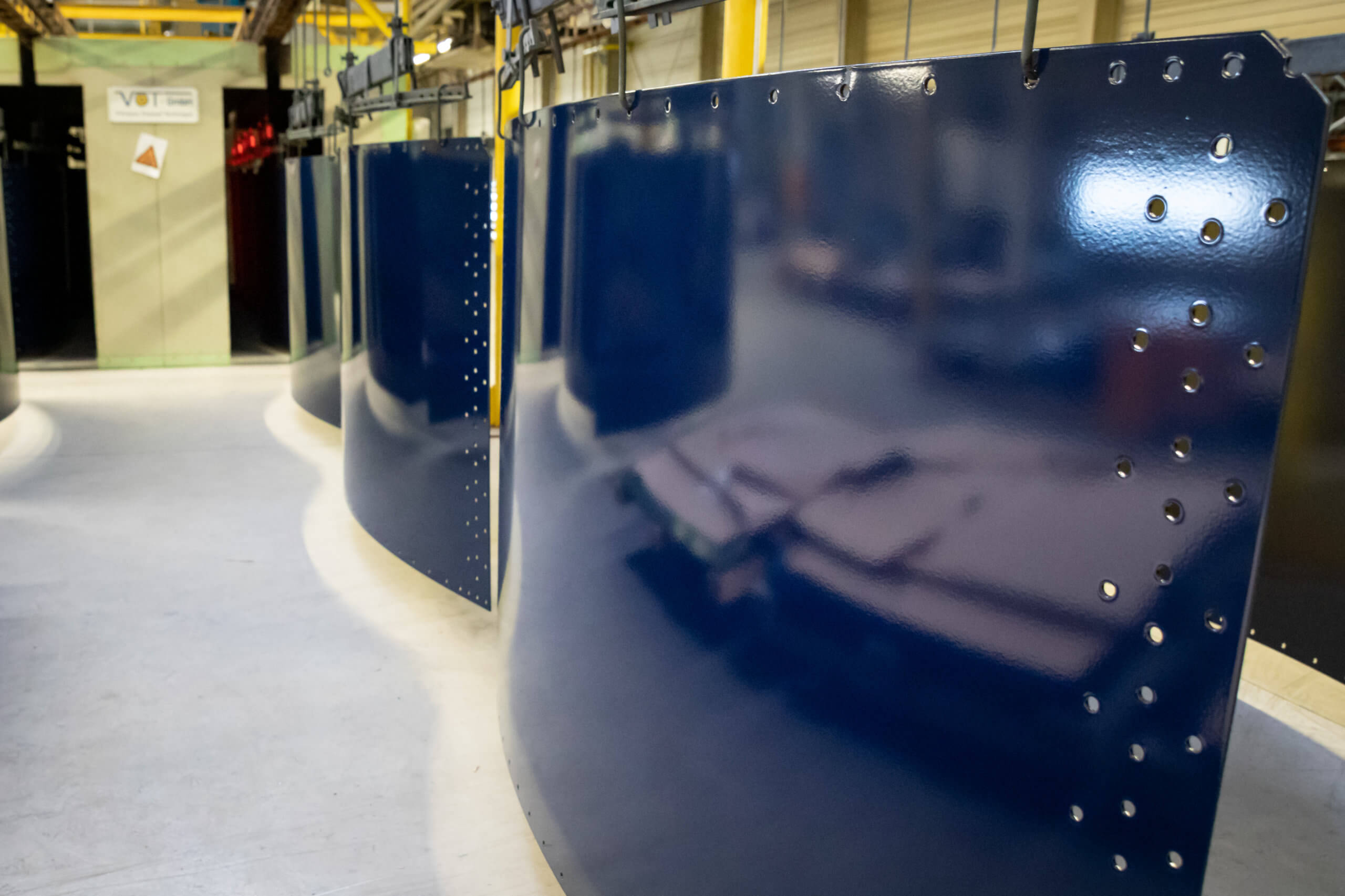Enamelling
Enamelling is at the heart of our surface finishing process. Only a few companies in Europe still master this art, which has been a traditional practice in Lauter for almost 200 years. Using valuable soils and soft spring water from the Ore Mountains, we make steel façade elements that remain durable for decades, thanks to their enamelled surface.
weiterlesen
The vitreous enamel is a thin layer of coloured glass that is fused onto the metal sheet at 850°C. During the firing process, steel and glass fuse to form a new composite material – vitreous enamel. Mineral colour pigments, usually metal oxides such as cobalt, copper or similar, are mixed with white clay to create the enamel’s radiant colours. Cobalt produces blue and gold produces ruby red. An in-house enamel technologist creates recipes for each individual colour in the company’s own laboratory. This requires an incredible amount of experience, sensitivity and countless trials until the result perfectly matches the customer’s needs.
Clay is mixed with coloured glass powder to form the enamel slip, which is then sprayed onto the metal sheets. The vitreous enamel coating is dried in hot air before the metal sheets go into the furnace. When hanging the sheets, it is important to ensure that the preformed sheets do not warp under the high temperatures. The metal is therefore heated slowly first, until the steel is completely heated through. The actual firing time only begins after 15 to 60 minutes.
It takes around four minutes for the coloured glass to bond with the preformed sheets at temperatures of 850°C. Glass and sheet metal literally melt together – vitreous enamel is therefore not a coating, but a genuine material bond. This is what makes this finish so resistant and durable for many decades.




